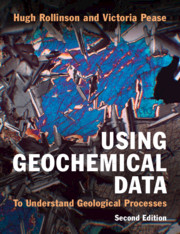The Rockeskyll complex in the north, central part of the Quaternary West Eifel volcanic field encapsulates an association of carbonatite, nephelinite and phonolite. The volcanic complex is dominated by three eruptive centres, which are distinct in their magma chemistry and their mode of emplacement. The Auf Dickel diatreme forms one centre and has erupted the only known carbonatite in the West Eifel, along with a broad range of alkaline rock types. Extrusive carbonatitic volcanism is represented by spheroidal autoliths, which preserve an equilibrium assemblage. The diatreme has also erupted xenoliths of calcite-bearing feldspathoidal syenite, phonolite and sanidine and clinopyroxene megacrysts, which are interpreted as fragments of a sub-volcanic complex. The carbonate phase of volcanism has several manifestations; extrusive lapilli, recrystallized ashes and calcite-bearing syenites, fragmented during diatreme emplacement.
A petrogenetic link between carbonatites and alkali mafic magmas is confirmed from Sr and Nd isotope systematics, and an upper mantle origin for the felsic rocks is suggested. The chemistry and mineralogy of mantle xenoliths erupted throughout the West Eifel indicate enrichment in those elements incompatible in the mantle. In addition, the evidence from trace element signatures and melts trapped as glasses support interaction between depleted mantle and small volume carbonate and felsic melts. This close association between carbonate and felsic melts in the mantle is mirrored in the surface eruptives of Auf Dickel and at numerous alkaline-carbonatite provinces worldwide.
